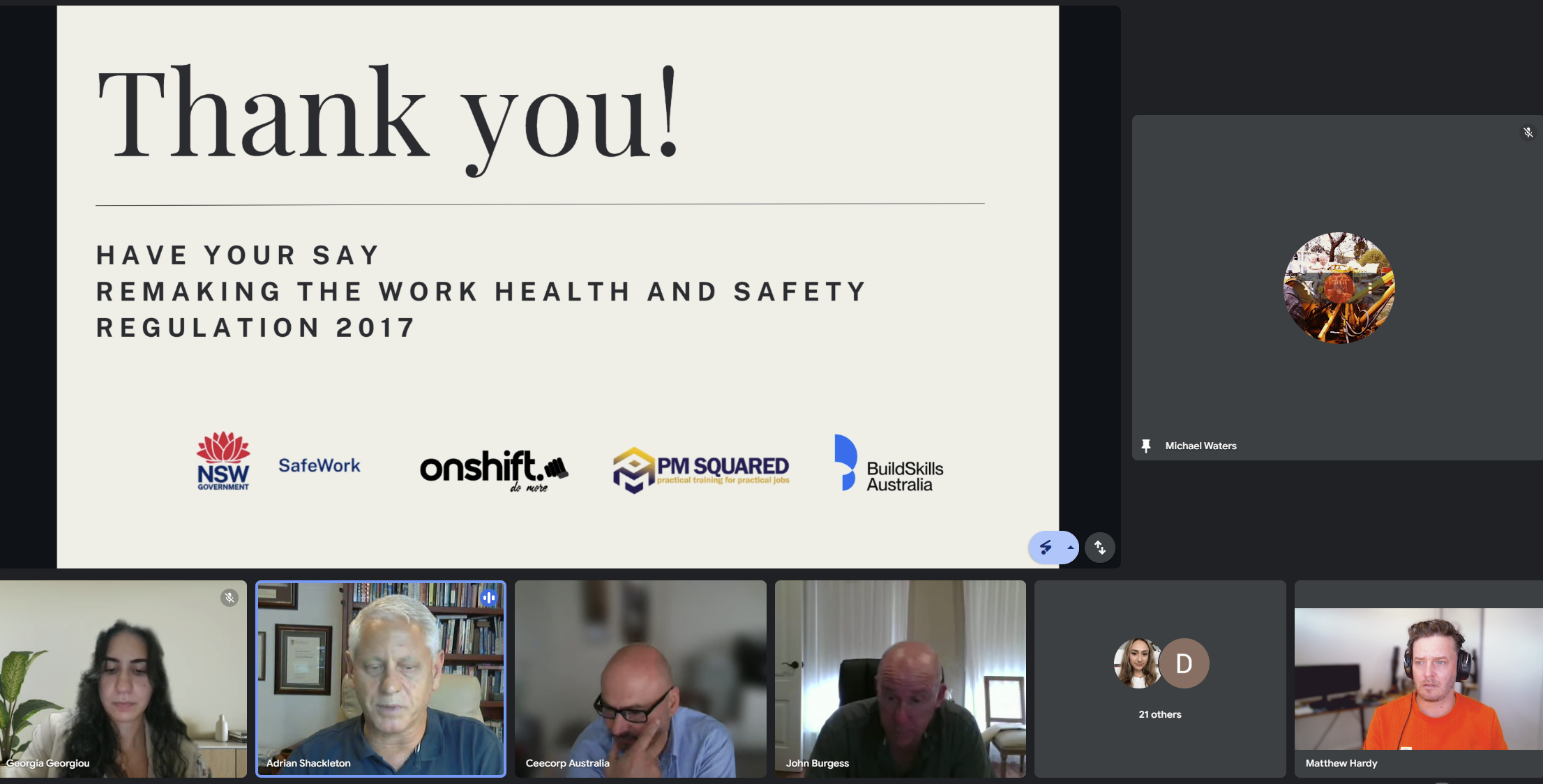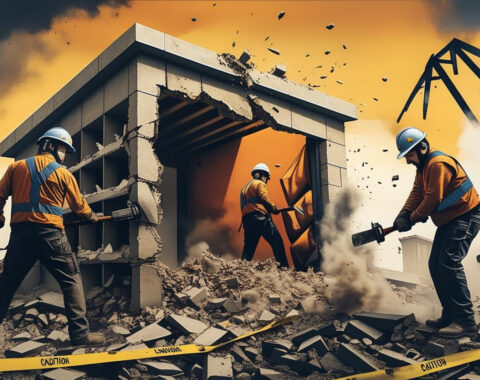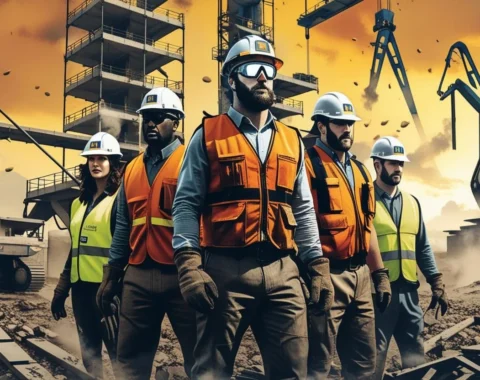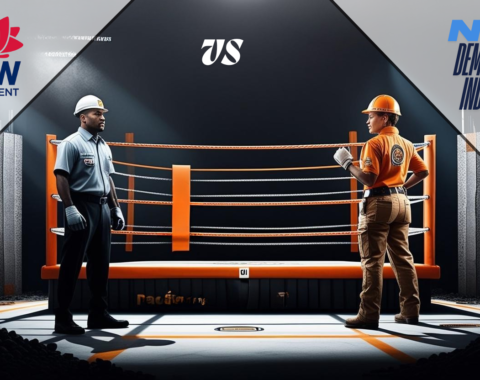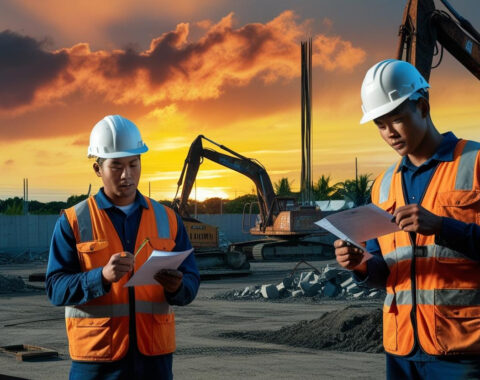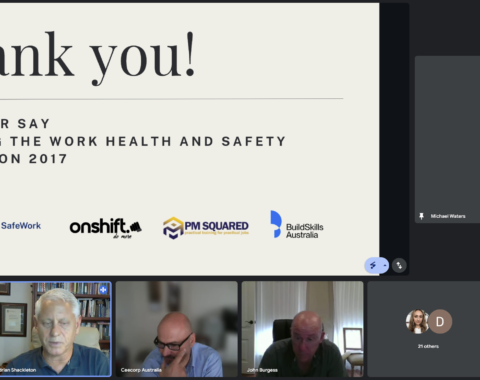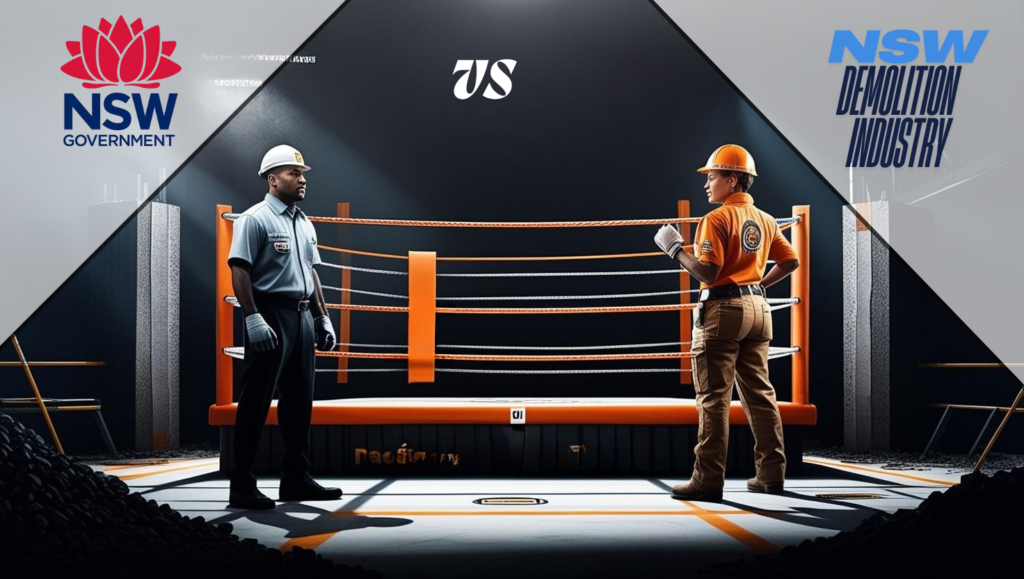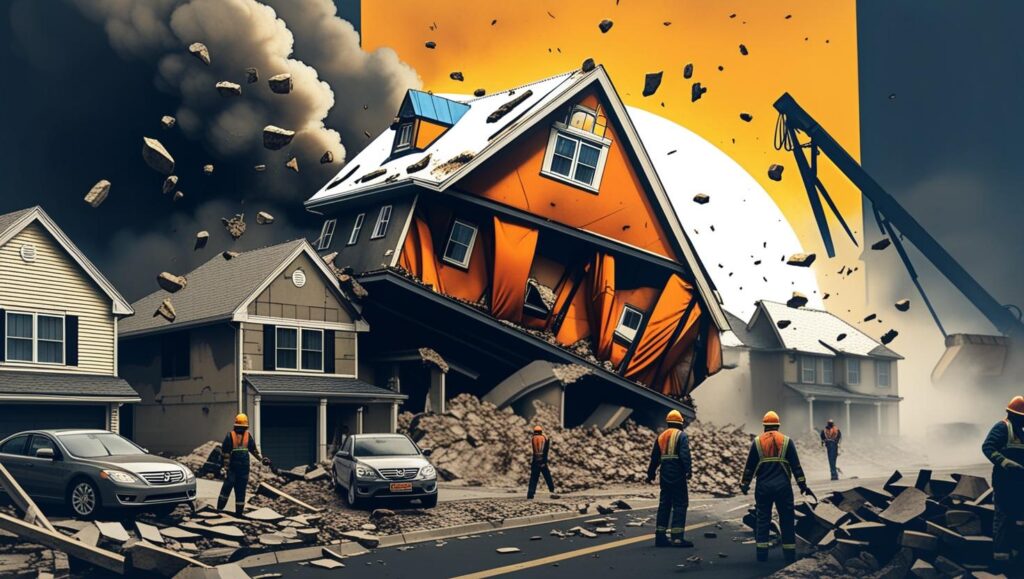Why the WHS Regulation Remake 2025 Matters How to be compliant as a Demolisher in NSW
1. Licensing Requirements for Demolition Work (Section 142A & 142B)
Change:
Demolition work must be carried out by or under a licensed demolition contractor.
SafeWork NSW has strengthened enforcement powers to act against unlicensed operators.
💡 Impact on Contractors:
Contractors must ensure that all demolition activities are conducted under a valid license.
SafeWork NSW will be able to take quicker action against non-compliant businesses.
“This is about making it clear who is responsible for compliance on site,”
Georgia Georgiou from SafeWork NSW. Tweet
2. Supervisor Presence Requirement (Section 142C)
Change:
The named qualified demoliton supervisor must be physically present during demolition.
If the license holder is also the named supervisor, no additional supervisor is required.
💡 Impact on Contractors:
Sole operators will benefit from the clarification that they do not need a separate supervisor.
Larger companies must ensure a named supervisor is always on-site.
“If you are both the named supervisor and license holder, this change ensures clarity. You don’t need a separate supervisor present,”
Dennis Clemence, Team Co-ordinator & Field Inspector, NSW Safework Tweet
3. Worker Training & Records (Sections 142D & 142E)
Change:
Workers directly connected to demolition work must complete training before starting.
Employers must maintain records proving training has been completed.
💡 Impact on Contractors:
Subcontractors, including crane operators and riggers, may need training depending on supervision arrangements.
SafeWork NSW will audit training records more rigorously.
“If a crane company sends trained riggers, do they still need demolition-specific training?”
Greg Taylor (Bark Demolition, QLD) Tweet
“If the demolition supervisor is present and monitoring, then no. But if they are working independently, they must have the training.”
Dennis Clemence, Team Co-ordinator & Field Inspector, NSW Safework Tweet
“This is about ensuring workers actually complete the training – not just start it,”
Georgia Georgiou from SafeWork NSW. Tweet
4. Strengthened Enforcement Powers (Section 143L)
Change:
SafeWork NSW can now remove a supervisor from a project if compliance breaches occur.
💡 Impact on Contractors:
Non-compliant supervisors can be immediately removed from a project.
This change ensures that only qualified demolition professionals oversee high-risk demolition work.
“This change gives SafeWork NSW the ability to act quickly if supervisors aren’t following safety obligations,”
Dennis Clemence, Team Co-ordinator & Field Inspector, NSW Safework Tweet
Industry Feedback & Concerns Raised
The session revealed several industry concerns, particularly regarding the scope of training requirements and the impact on operations.
1. Subcontractor Training Requirements
“We already train our workers extensively, but these additional requirements might add complexity to how we manage subcontractors.”
John Harris, National HSEQ Manager at Liberty Industrial [Deconstruction, Remediation & Civil] Tweet
“The focus should be on how SafeWork polices the regulations rather than adding more requirements.”
George Taxidis, Managing Director, Ceecorp Australia Tweet
2. Compliance Burdens on Large-Scale Projects
“On large sites, does every truck driver need training just to step out of their cab for loading?”
Graham Cressey, CEO Industrial Demolition Tweet
“If the driver remains in designated zones and doesn’t interfere with demolition, training isn’t required. If they need access to active zones, training may be necessary.”
Dennis Clemence, Team Co-ordinator & Field Inspector, NSW Safework Tweet
3. Supervision Clarifications
“Does ‘supervision’ mean the supervisor must be in line of sight at all times?”
Matthew Hardy, (Host & Industry Expert), CEO Onshift Education, Director Pemulwuy Contracting Pty Ltd Tweet
“Supervisors must be within sight and hearing distance. If workers are far apart, use radios or closed-circuit comms.”
Dennis Clemence, Team Co-ordinator & Field Inspector, NSW Safework Tweet
Compliance Actions Required for Demolition Contractors
✅ Review licensing obligations to ensure only licensed contractors perform demolition.
✅ Confirm named supervisors are present on-site during all demolition work.
✅ Ensure workers have completed demolition training before starting work.
✅ Maintain proper training records for compliance audits.
✅ Stay informed on SafeWork NSW updates and participate in feedback sessions.
The best way forward is to be proactive. Understand the changes now and make sure your business is ahead of compliance,”
Matthew Hardy, (Host & Industry Expert), CEO Onshift Education, Director Pemulwuy Contracting Pty Ltd Tweet
Next Steps & Final Takeaways
📌 Review the WHS Regulation Remake 2025 Discussion Paper [🔗 SafeWork NSW Website]
📌 Submit Feedback Before March 12, 2025 [🔗 Have Your Say Page]
📌 Stay Updated on SafeWork NSW Compliance Guidelines [🔗 Official SafeWork Portal]
As these new regulations come into effect, demolition contractors must adapt quickly to avoid penalties and ensure workplace safety. The WHS Regulation Remake 2025 marks a significant shift towards greater clarity, stronger compliance measures, and improved safety standards across the industry.
🔍 Have questions or concerns? Drop them in the comments below or reach out to SafeWork NSW for guidance!
Meeting Record: Webinar - Have Your Say Info Session: WHS Remake 2025
Meeting Record: Webinar – Have Your Say Info Session: WHS Remake 2025
Date: March 11, 2025
Time: 3 – 4pm AEST
Host: Onshift Education, SafeWork NSW & Industry Representatives
Attendees: This information is redacted to protect privacy of attendee’s. 42 people attended this event and the majority of 82% of attendee’s stayed the full duration.
All attendees hold demolition licences in NSW or work for a Licenced Demolisher in NSW.
Speakers attended from either NSW Government or hold DE1 or DE2 Conditional Licences and represented all tiers of employers, small, medium and large across all classes of structures.
Agenda Overview
- Welcome & Introductions
- Purpose of the Webinar
- Regulatory Changes & WHS Remake 2025
- Key Discussion Points on Work Health & Safety Legislation
- Consultation Process & Industry Feedback
- Specific Changes to Demolition Licensing & Training
- Questions & Answers
- Next Steps & Closing Remarks
Meeting Summary
The session provided an overview of the Work Health and Safety (WHS) Regulation Remake 2025, its implications for businesses, and the consultation process. SafeWork NSW representatives explained the legislative changes, their alignment with national WHS standards, and the responsibilities of employers and workers. Key industry stakeholders participated in discussions, highlighting concerns and seeking clarification on specific regulatory provisions.
Key Takeaways
- The WHS Regulation 2017 is set for repeal in September 2025, requiring a remake.
- The remake aims to improve clarity, remove redundant provisions, and align licensing, training, and supervision requirements.
- Industry consultation is ongoing to ensure practical application of new regulations.
- Specific focus was given to demolition licensing, training requirements, and supervision on demolition sites.
Detailed Discussion Points
1. Introduction & Purpose of the Webinar
The webinar commenced with a Welcome to Country acknowledgment and an introduction by SafeWork NSW representatives. The purpose of the session was to discuss regulatory updates affecting the industry and encourage participation in the consultation process.
2. Regulatory Changes & WHS Remake 2025
SafeWork NSW outlined the key legal frameworks governing WHS:
- Work Health & Safety Act – Defines employer duties.
- Work Health & Safety Regulations – Covers administrative requirements, licensing, and supervision.
- Codes of Practice – Provides practical guidance for compliance.
3. Consultation Process & Industry Feedback
- The public consultation period is open until March 12, 2025.
- Industry members were encouraged to review the discussion paper and submit feedback.
- The SafeWork NSW website hosts updates, FAQs, and submission forms.
4. Key WHS Amendments for Demolition Work
Demolition Licensing Requirements
- Section 142A: Clarifies licensing requirements.
- Section 142B: Ensures only licensed individuals undertake demolition work.
- Section 142C: Stipulates that the named supervisor must be present during demolition.
Demolition Worker Training & Compliance
- Section 142D: Confirms training obligations for demolition workers.
- Section 142E: Requires employers to maintain training records.
- Section 143L: Outlines conditions for the removal of supervisors for non-compliance.
5. Industry Concerns & Clarifications
- Training for Subcontractors – Clarity was sought on whether crane operators, riggers, and hydraulic specialists must undertake demolition training.
- Supervision on Demolition Sites – Discussion on adequate supervision and the role of licensed supervisors.
- Truck Driver Compliance – Questions arose regarding whether truck drivers loading waste on demolition sites must complete training.
6. Next Steps
- Industry members were urged to submit feedback via the Have Your Say page.
- Employers should ensure compliance by reviewing SafeWork NSW resources.
- SafeWork NSW will review feedback and finalize regulations before implementation in 2025.
WHS Regulation Remake 2025 Webinar – Key Discussion Transcript
Introduction to the WHS Regulation Remake
Matthew Hardy (Host): Welcome, everyone. Today’s session focuses on the proposed changes to the Work Health and Safety (WHS) Regulation Remake 2025. These changes impact licensing, supervision, and training for demolition contractors. SafeWork NSW representatives will clarify what these changes mean for industry compliance.
Georgia Georgiou (SafeWork NSW): The WHS Regulation is being remade because it is scheduled for automatic repeal on September 1, 2025. The goal is to ensure ongoing legal clarity, align licensing and training requirements, and improve safety enforcement.
Understanding the WHS Legal Framework
1. The WHS Act
Georgia Georgiou: The Work Health and Safety Act sets out the legal framework for workplace safety and the general responsibilities for employers. Employers must ensure the health and safety of their workers and anyone affected by their operations.
2. The WHS Regulation
Georgia Georgiou: The Work Health and Safety Regulation provides detailed requirements to support the duties in the Act. It includes:
- Licensing requirements for high-risk activities.
- Procedural obligations, such as record-keeping and training.
- Supervision and compliance requirements for demolition work.
3. Codes of Practice (MCOPs)
Georgia Georgiou: Codes of Practice provide practical guidance for meeting safety obligations. The Demolition Work Code of Practice outlines:
- How to comply with the Act and Regulation.
- Best practices for safe demolition operations.
- How to prevent risks associated with hazardous materials.
4. The Role of SafeWork NSW
Georgia Georgiou: SafeWork NSW is responsible for enforcing WHS laws, ensuring businesses comply with licensing, training, and supervision requirements. Our role includes:
- Providing regulatory guidance.
- Auditing compliance through inspections.
- Taking enforcement action against unsafe practices.
➡ “Legislation, regulation, and codes of practice all work together. The Act sets out the duties, the Regulation provides the details, and Codes of Practice explain how to comply,” said Georgia Georgiou.
Key Regulatory Changes & Clarifications
1. Licensing Requirements for Demolition Work (Section 142A & 142B)
Georgia Georgiou: The amendments clarify that demolition work must be carried out by or under a licensed demolition contractor. This strengthens SafeWork NSW’s ability to act against unlicensed operations.
Matthew Hardy: So, this doesn’t change non-notifiable works?
Georgia Georgiou: Correct. It simply aligns the regulation with existing WHS Act provisions.
2. Named Supervisor Presence (Section 142C)
Georgia Georgiou: The amendment clarifies that if the license holder and named supervisor are the same person, an additional supervisor is not required. This prevents unnecessary duplication for sole operators.
John Harris (Liberty Industrial): What if the named supervisor is sick? Does the site have to shut down?
Dennis Clemence (SafeWork NSW): If no other nominated supervisor is listed on your license, work must cease. However, if another licensed supervisor is available, you can update the notification and continue work.
3. Worker Training & Record-Keeping (Sections 142D & 142E)
Georgia Georgiou: Workers directly connected to licensed demolition work must complete training before starting. Training records must reflect training that has been completed, not just undertaken.
Greg Taylor (Bark Demolition, QLD): Do subcontractors like crane operators, riggers, and concrete cutters need training?
Dennis Clemence: If the demolition supervisor is present and monitoring, they do not need separate training. But if they work independently, they must be trained.
Matthew Hardy: So, if a demolition supervisor isn’t there, subcontractors must be trained?
Dennis Clemence: Correct. Supervision or training is required.
4. Stronger Enforcement Powers (Section 143L)
Dennis Clemence: SafeWork NSW can remove a supervisor from a project if they breach WHS regulations. This ensures only compliant professionals oversee demolition activities.
John Burgess (Industry Representative): If we have multiple licensed supervisors on a site, can any of them escort subcontractors?
Dennis Clemence: Yes, as long as they are a licensed supervisor from the same demolition company.
5. Demolition Site Supervision & Compliance Issues
John Harris: If demolition work is spread across a large site, does the supervisor need to be physically present in every area at all times?
Dennis Clemence: Supervisors must be within sight and hearing distance. If workers are operating remotely, radios or closed-circuit communication must be used.
John Burgess: What about truck drivers? They often need to leave their cab for load securing.
Dennis Clemence: If the truck driver stays in designated zones and does not interfere with demolition, training is not required. However, if they need access to active zones, they must be trained.
Industry Feedback & Final Takeaways
- Clarifications Needed for Subcontractor Training – SafeWork NSW acknowledged industry concerns and will update FAQs.
- Named Supervisor Requirements – Businesses should ensure alternative supervisors are listed on their license to avoid delays.
- Practical Supervision on Large Sites – Supervisors should use radio or visual monitoring to meet compliance.
- Truck Driver Compliance – Employers should ensure designated loading zones are clear and workers are properly inducted.
📌 Next Steps:
- Review the WHS Regulation Remake 2025 Discussion Paper.
- Submit feedback via the Have Your Say page before March 12, 2025.
- Stay informed through SafeWork NSW compliance updates.
➡ “Understanding these changes now will help businesses stay ahead of compliance,” concluded Matthew Hardy.

